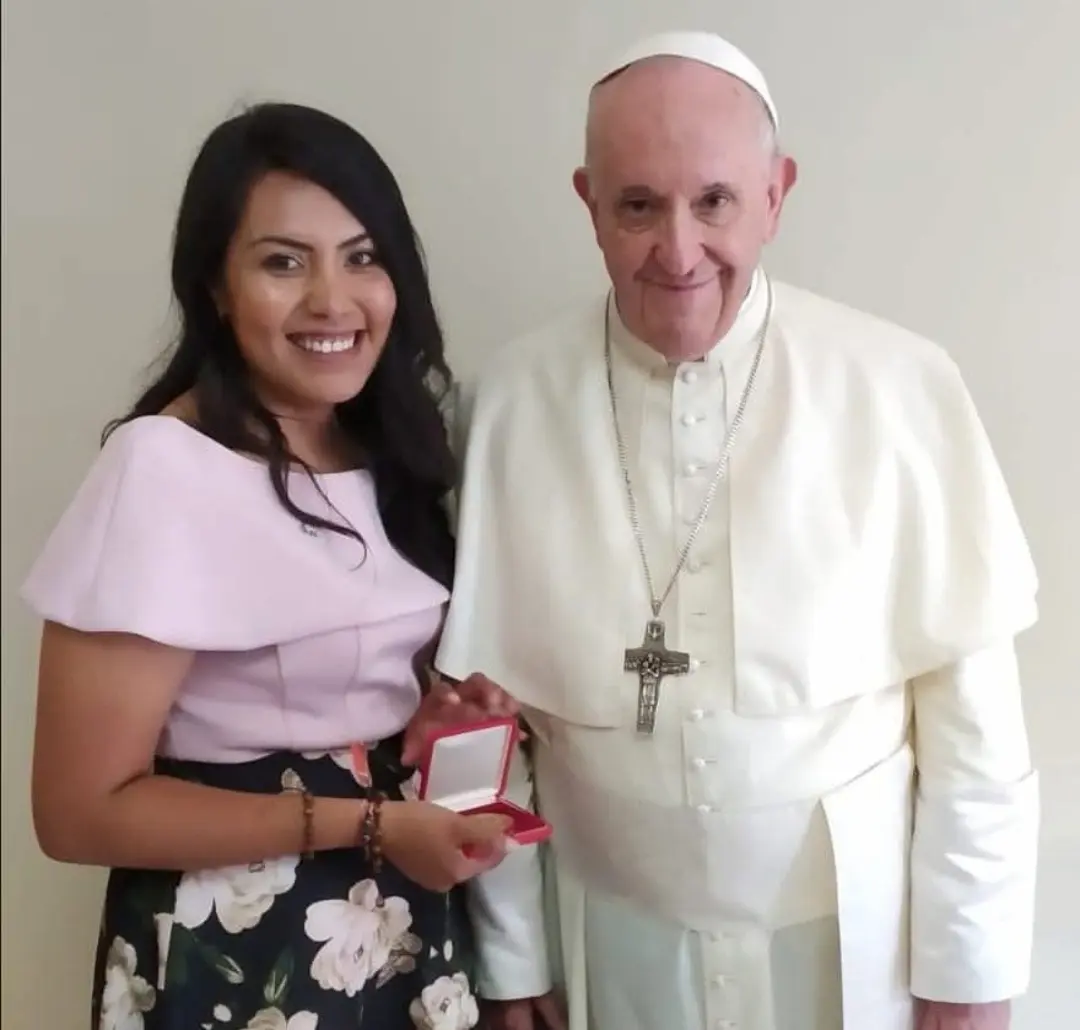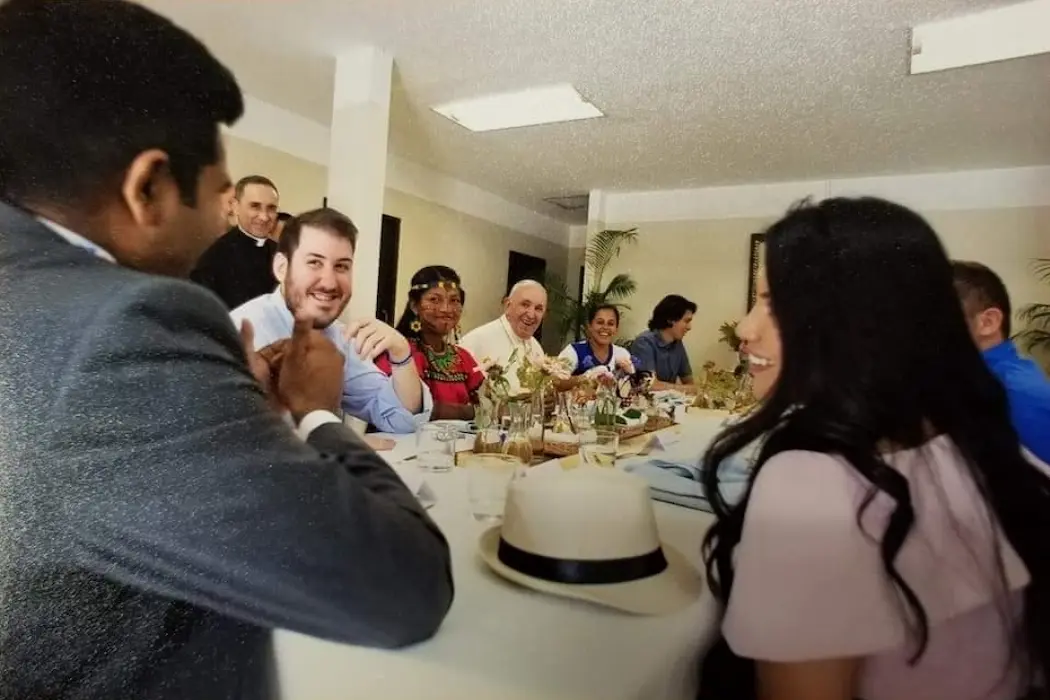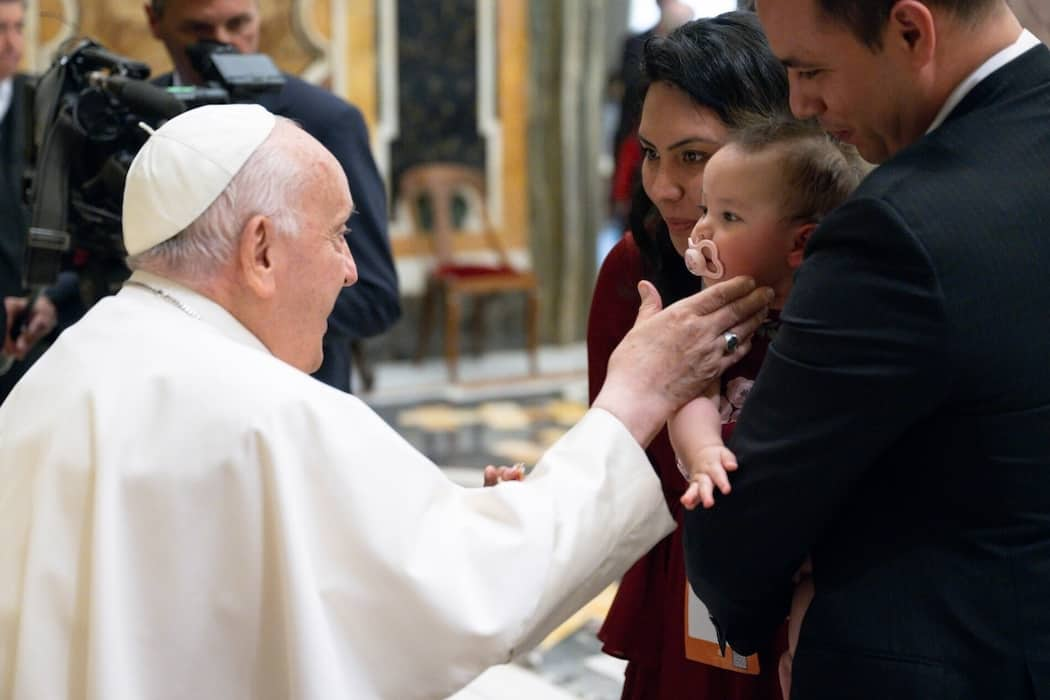
A Leadership of Tenderness and Presence
Pope Francis’s leadership is marked by attentiveness to pequeños gestos—small gestures that carry great meaning. His incarnational approach reminds us that God is revealed in presence, not spectacle; in compassion, not control.
In 2019, during a private lunch with nine young people at World Youth Day in Panama, he created a safe, agenda-free space focused on listening. At the end, he gave us a statue of Nuestra Señora de la Prontitud (Our Lady of Promptness), inviting us to be “always in a hurry to encounter and never too busy to love.” It was a challenge to reject efficiency as holiness and embrace loving attentiveness.

Kenosis and Concrete Encounter
Francis models kenotic leadership—emptying oneself to make room for the other. During our lunch, he listened deeply, responded humbly, and asked me to translate so he could speak desde el corazón—from the heart. This wasn’t a performance. It was pastoral presence.
When I asked about the sexual abuse crisis in the U.S., he put his fork down, looked me in the eye, and responded with honesty and solidarity. He did not shy away from the pain. That was the first time he addressed the issue publicly—and he did so with young people. His presence as a spiritual shepherd was transparent, pastoral, and without performance.
The Power of Small Gestures
In Gaudete et Exsultate, Pope Francis reminds us that holiness is found in small details. During a 2019 audience, I witnessed how he paused the closing to lead everyone in singing “Happy Birthday” to a Swiss Guard—an act that reflected his joy in recognizing others.
In 2024 during a private audience that I participated in with my family, including my daughter Kathleen Guadalupe, then 8 months old, he immediately noticed her. He stepped out of his way to bless her, joke with us, and offer her candies. It wasn’t a staged moment—it was a gesture of love. He met us as a family, with warmth and simplicity.

Rooted in Hope
In Christus Vivit, Francis calls young people to be Gospel protagonists, not for their perfection, but for their desire to serve. His question—“Can you weep?” (CV 75–76)—challenges us to see and respond to suffering with compassion.
He once shared that before addressing the U.S. bishops’ desire to act quickly against injustice, he told them to first pray. Then, he sent them to his “padre espiritual” (spiritual father) as he called him. “Before any agendas or plans, we must pray,” he said. “Prayer is not an agenda item—it is a way of being and doing.” Prayer grounds us like rooted trees amid chaos and uncertainty.
A Mysticism for Ministry
Francis offers a spirituality of everyday encounter—accessible yet profound. He invites ministers to resist clericalism and embrace a mysticism lived in the ordinary, where small gestures are sacramental.
This mysticism draws near to wounds, celebrates joy, and leads with presence. Pope Francis lived this pastoral integration by showing that leadership is not about control, but accompaniment. Like Mary, we are called to be “in a hurry to love,” never too busy for God in the other.
The statue of Nuestra Señora de la Prontitud symbolizes Mary’s prompt service to Elizabeth. Her love was lived in everyday acts: wrapping her child, searching for him, advocating for others, accompanying the grieving. Francis followed this example—rejecting papal grandeur and choosing authenticity.
Conclusion
Pope Francis invites us to lead not by dominance or perfection, but through presence, pause, and love. His legacy is a spirituality of small gestures—radical in their simplicity and powerful in their witness.
Let us remember (recordar), connect (conectarse), and take the first step (primerear), trusting that the Spirit moves in relationships and from below. This is the kind of leadership our Church and world long for.


